How to better examine customer behaviour to assess their readiness to convert
Today’s marketing funnel is a lot more intricate than it once was. There are now more elements to consider when it comes to awareness, throughout the process of lead nurturing and up until the point of sale. Before closing, buyers are exposed to your brand via a variety of touches, often spanning several devices, media formats and channels.
The idea is that no matter what route your prospects take along this journey, and no matter how long the journey takes, if they remain engaged, then they’re always getting increasingly closer to the point of sales-readiness.
But what does it mean for an anonymous audience member to “engage” with your brand? Richard Sedley once wrote that engagement refers to “repeated interactions that strengthen the emotional, psychological or physical investment a customer has in a brand.” This definition is just one of many possible ways of thinking about engagement.
To effectively understand the potential impact of such interactions, marketers need to be increasingly data-oriented. This calls for thinking beyond the concept of email lead capture forms as the sole entry point in your marketing funnel, instead examining onsite engagement according to relevant benchmarks.
Of course, being able to capture and nurture leads is an obvious must in the world of marketing. According to Content Marketing Institute’s Final 2016 B2B report, this field is the main priority for B2B marketers.
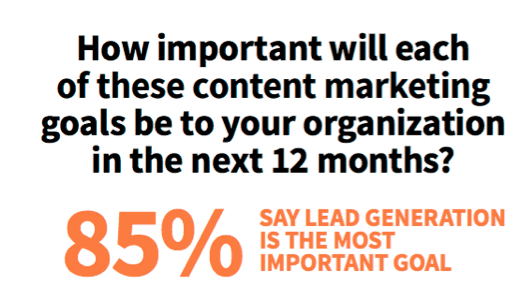
Source
But there are multiple metrics that need to enter the engagement conversation. These can include subscribers to your blog and email list, inbound links from external sites, social media shares and other social interactions. It makes sense to include these indicators among those you track, as they all carry weight in demonstrating and the level of customer interest in your product offering.
But the ultimate determinant of a customer’s purchasing commitment comes down to trust. A recent thought piece by the Nielsen Norman Group notes that “In relationships (whether between two people or between a site and a user), individuals must have basic trust needs met before being able to progress to more substantial interactions.” In the figure below, they examine this trust in the form of a pyramid based on five levels of commitment:
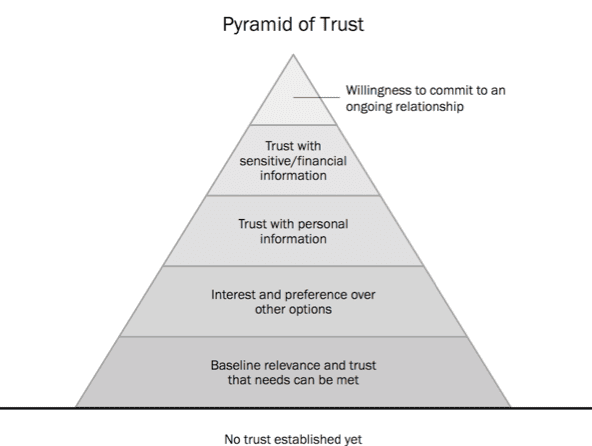
Source
But how can marketers actually know which customers have met sufficient levels of trust to convert? How can they know the level of customer purchasing intent? Steve Peck, Co-Founder of Docalytics, cites our ability to effectively measure onsite engagement as a critical part of showcasing an organization’s level of accountability. Such efforts provide useful information that can, and should, shape discussions surrounding post-funnel outreach thinking and performance measurement.
Today’s B2B buyer conducts significant amount of research prior to discussing a potential transaction with a salesperson. Hence the importance of engaging content to aid in the self-service nurturing process, which explains Peck’s assertion that “ a key to success will be to routinely measure the quality of your content and hold your team accountable for improving reader engagement across all your content over time.” This may prove difficult, considering the attention span of many prospective customers.
Here are some content marketing engagement benchmark stats, as revealed by Docalytics:

Source
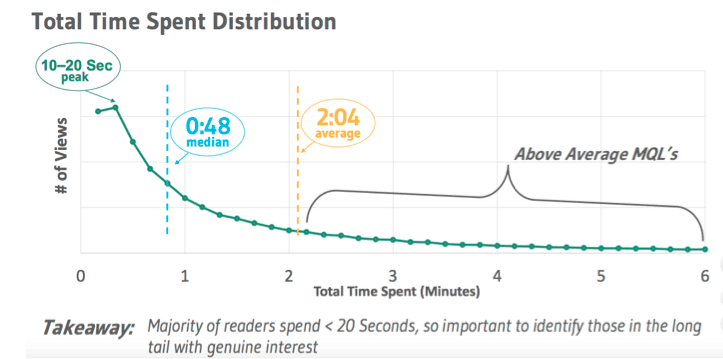
Source
Given the attention span limitations cited above, marketers have alarmingly little time to command the attention of prospective customers. As such, it is exceedingly important to be able to identify those customers that have passed the point of awareness and engaged in your content – these customers have expressed behaviors that define optimal points of intent. Additionally, it will also be helpful to adopt tools and software that can make sense of these onsite visits in order to better understand random customer screening or actual purchasing intent.
With this in mind, let’s briefly look at a few ways marketers can benchmark onsite engagement to boost lead generation efforts:
1. Examine customer behavior based on time spent on specific webpages.
Looking at the different customer funnel paths taken can provide useful information on onsite engagement. Perhaps there are specific webpages that are more successful in turning intent into actual conversions.
Where performance is noted to be weaker, examine ways to improve engagement performance by A/B testing different options.
2. Adopt B2B tools that can elevate your relationship with prospective clients.
Understanding how B2B leads arrived at your site provides marketers with insights into their intent. Having this information prior to tweeting, emailing or phoning prospective customers can reduce the uncertainty often found in cold pitching. Thankfully, there are a range of tools that bridge this knowledge gap, including those offering content upgrades in exchange for permission to follow up– this is made possible via WordPress plugins such as OptinMonster and Gravity Forms. These and other similar plugins can make implementation extremely simple, if your site is built around that particular CMS. Additionally, for B2B marketers, lead generation tools such as Leadfeeder, Pardot, and Lead Forensics are effective in reeling in user insights and behaviors related to prospective customers.
3. Not all customer funnels are equal – prepare your own matrix
All too often, marketers will force their engagement data to fit the outdated scheme of the linear sales funnel. Unfortunately, this is an oversimplification of a more complex process involving multiple customer journey touchpoints.
With so many customer journey paths to consider, it helps to think a bit more creatively about approaching our target audience. For instance, Buffer’s Kevan Lee recommends that the post-funnel marketer consider analyzing website visitors, leads and customers according to a newly defined matrix. This can help evaluate which site visitors have expressed behaviors that reflect high intent, i.e. are most worthy of outreach.
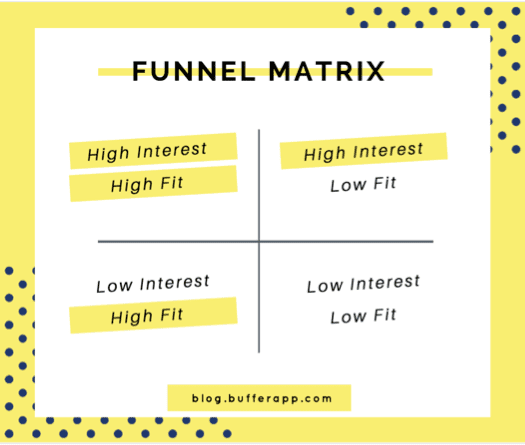
Source
Google also launched an interesting tool to help marketers identify industry-specific channel touchpoint journey trends according to different search parameters (business size, particular industry, and specific region). Once the filters are filled, the search results reveal valuable engagement data for understanding key customer touchpoints along the sales funnel.
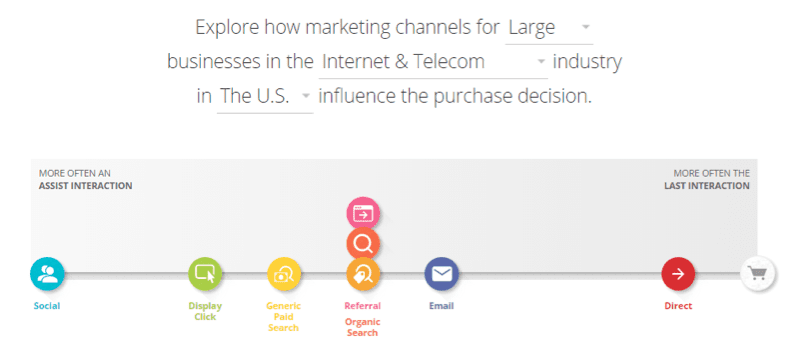 Source
Source
To sum up, developing the ability to benchmark onsite engagement can have a direct impact on sales conversion rates and retention rates alike. Content plays a major role in this onsite engagement, but marketers need to consider additional parameters and examine customer behaviors at different points in the buyer’s complex journey, which is constantly moving and changing shape.

Thanks to
Rotem Gal for sharing their advice and opinions in this post. Rotem is Vice President of Marketing at
InBound Junction. You can follow him on
Twitter or connect on
LinkedIn.









 Thanks to
Thanks to 


